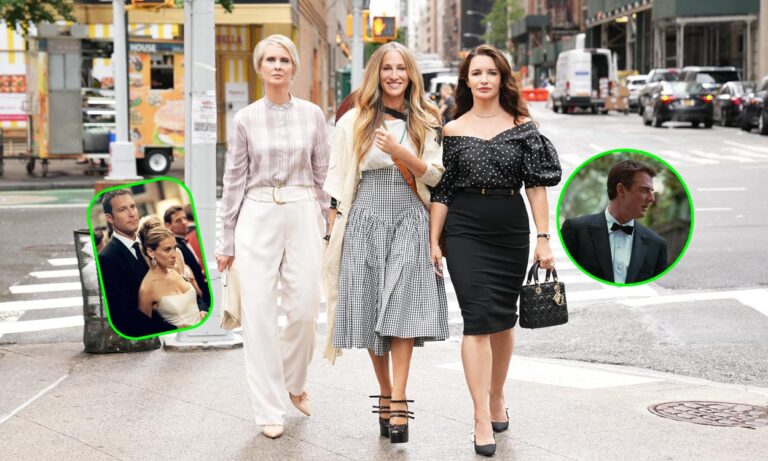Are the days of rich bad boys over? Season 2 of And Just Like That… is over toxic love interests

When promotional pictures of And Just Like That… season two began to circulate, fans were bowled over by the snaps of Sarah Jessica Parker’s character Carrie Bradshaw walking side by side with none other than OG ex-boyfriend Aiden Shaw played by actor John Corbett. And while we don’t know much about the potential plot line between Bradshaw and Shaw, I couldn’t help but wonder, are the days of rich bad boys officially over?
The spin-off is of course based on the original iconic show Sex and the City, which earned millions by promoting the archetype of a wealthy and established man who, while insanely toxic, was pined over by Bradshaw in almost every episode.
From the emotionally abusive Mr Big who loved to string along the New York Star columnist and treat her like a piece of excrement on his designer shoe, to the affluent politician who broke up with her because she wasn’t comfortable fulfilling his sexual fantasies, these characters were truly the blueprint for emotionally unavailable crypto boys.
On the other hand, we had Shaw, a middle-class furniture designer who not only adored Bradshaw but consistently treated her right and fixed her bathroom. It’s the little things, right? Naturally, this all came to a crashing conclusion after the writer cheated on him and then swerved any potential future nuptials.
And it wasn’t only the fans that shipped Bradshaw and Shaw—confusing, I know. In season four episode 18, Miranda exclaimed: “Big and Carrie were never supposed to be together! If she was gonna wind up with anyone, it was Aidan!”
So, the question is: Did Bradshaw’s romantic decisions and inclinations ultimately impact a whole generation of heterosexual women? Were we as young girls taught to go from one well-off toxic man to another, all in the name of love, sex, and chemistry? Well, the answer is hell yes.
You only have to scroll through 2000s Netflix to find a flood of shows with narratives championing the female protagonist and the unhealthy yet somehow charming boy. Take Gossip Girl for example. Of course Blair Waldorf ended up with New York deviant Chuck Bass. How could sweet but meek and mild Dan Humphrey ever compete?
I have to wonder if this is why my own current crush is someone who’s opening a club in London and has multiple women throwing themselves at him. On the surface, he practically mirrors the classic Bass/Mr Big trope. Moreover, is this why I almost cheated on and then subsequently dumped that one partner who worshipped the ground I walked on when I was nineteen?
It’s definitely giving Rory from Gilmore Girls energy. I mean, Dean was nothing to write home about, but he was definitely not as emotionally erratic and unavailable as the angsty Jess. And don’t even get me started on the high-key pretentious Logan.
So, is And Just Like That… now attempting to somehow rewrite history by pairing Bradshaw with a much healthier past lover? And, if that’s the case, is it actually going to heal a generation of women who were programmed to pick problematic men like Mr Big?
Is it really enough to now do a 360 and try to convince the viewers that nice men like Shaw are actually the partners who’ll make your life more worthwhile? Or is it just another marketing scheme from the producers, who’re now trying to capitalise on how much the fans loved Bradshaw and Shaw together?
It should also be noted that Mr Big’s plot line was always going to tail off after multiple women came out with sexual assault allegations against actor Chris North. In other words, it wasn’t the biggest stretch that the writers needed to bring back a different love interest for season two.
As for me, I’ve now muted my crush’s Instagram Stories and while it was painful, I knew it was the right call—better save myself from the heartbreak now rather than later. And while I might now be suffering from withdrawal symptoms, similar to how Bradshaw felt when she tried to quit smoking for Shaw’s benefit, I hope my longing has subsided by the time And Just Like That… season two premieres.




